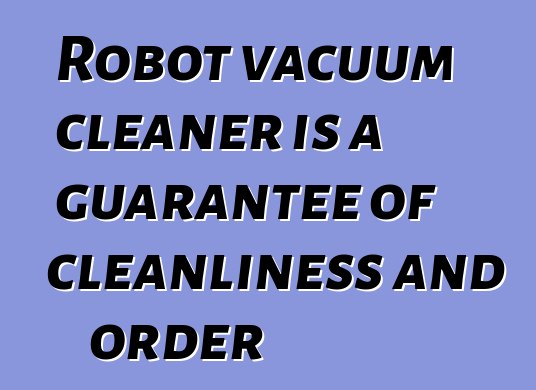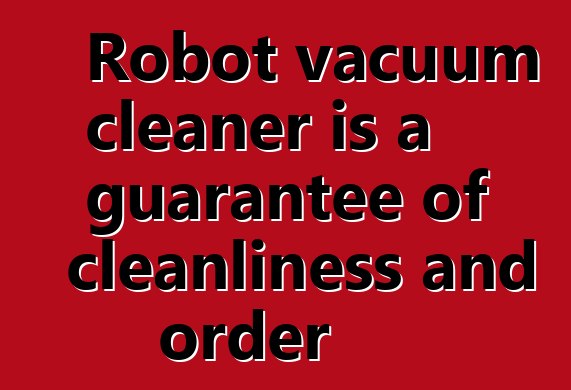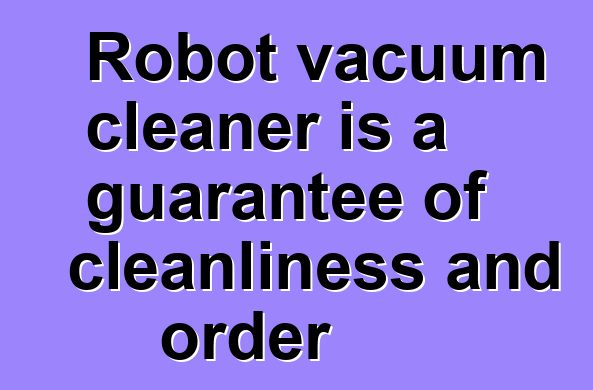





A little more than ten years have passed since the appearance of the first robot vacuum cleaner. During this time, the device has been improved, and its location has also changed: from offices and public institutions, the device was relocated to private apartments. Now, a modernized device that can independently monitor the cleanliness of the floor covering has become available to every consumer, since the price of a robotic vacuum cleaner has dropped significantly in recent years.
The structure of the robot vacuum cleaner, the principle of its operation
Each device is necessarily equipped with the following blocks: navigation system, engine, battery, cleaning module. The level of cleanliness on the treated surface depends on how well each of them copes with the functions assigned to it.
Navigation
Moving around the room, the robot encounters a lot of obstacles, for which the navigation system is used to successfully overcome them. Thanks to her, the device safely bypasses sofas and chairs, avoids collisions with other things. With poor performance of this unit, the device may lose orientation in space, get stuck somewhere, leave some area dirty.
Different according to the principle of operation of the orientation system in the room have been created. Each of them has both pluses and minuses. The most common types of navigation blocks are:
• with robot sensors;
• with remote motion relays;
• laser devices;
• video devices.
When using the sensors built into the bumper of the robot vacuum cleaner, the situation in the room is analyzed at a particular moment, if an obstacle is encountered, the device turns to the side or moves along the obstacle. Modern devices also have the ability to analyze the degree of contamination and, where necessary, work more intensively.
How well this type of vacuum cleaner will navigate the terrain depends on many factors:
• the number of sensors and the principle of their operation;
• processor speed;
• device memory size;
• other nuances.
Separate models, encountering areas with a lot of dust and dirt, change the movement algorithm, cyclically moving back and forth (to the side, in a circle, etc.).
Navigation devices placed in the room are also used, sometimes they act as a zone separator. They are also called lighthouses, sometimes called virtual walls. Outwardly, they look like a small plastic box that serves as a source of infrared rays. They are not perceived by human vision, do not pose harm to the body (this radiation is even used for medical purposes).
To date, laser navigation is considered the most advanced, which uses rangefinders that automatically determine the distance to objects in the room and, based on the information received, make up a "map" stored in the robot's memory. Typically, models with such systems are dominated by rectilinear trajectories. After removing one room, the robot itself moves to another room.
Robotic vacuum cleaners with cameras perform orientation along the ceiling. The lens is placed on the top panel of the device, receiving an image of the walls and ceiling. What the motion algorithm will be depends on the specific manufacturer. The device can move randomly, in a straight line, in circles.
cleaning process
In general, the principle of cleaning the surface is the same for most models: the brush located on the side captures the dirt and moves it closer to the center, where the main brush sweeps everything into the trash can. There, dust and other debris is picked up by the air stream and transferred to the dust collector, where the pressing takes place. After that, the air is cleaned in filters and blown into the room through a special hole. Thus, the quality of cleaning is more dependent on the operation of the brushes and the filtration of the air mass. In some models, part of the dust is returned to the room along with the purified air.
The main parameters of the robot vacuum cleaner
There are many different devices available with different features. Therefore, when choosing a vacuum cleaner of this type, it is worth familiarizing yourself with the main properties, this will facilitate the choice of a model that is best suited for you. The most significant device parameters are listed below:
• Set of supplied brushes. Most often, it includes two pieces, one of them is rubber. During the operation of the vacuum cleaner, one is busy collecting dust (bristly), the second sweeps large rubbish (crumbs, sand, etc.). Most appliances have a side brush, which makes cleaning less time consuming.
• The type of filter being used. There are many options here, from simple foam pads to multi-layered HEPA type air purifiers, ideal for people prone to allergies.
• Engine power, averaging 40-65 watts.
• The volume of the garbage collector, which can reach 1 liter.
Modern appliances, after cleaning, have the ability to independently return to the “base”, to the recharging device.





